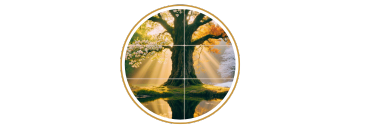任脈 (Rèn Mài) — The Conception Vessel
任 (Rèn): The character 任 means “to bear, to carry responsibility, to entrust.” It joins the person radical (亻) with the phonetic 壬, symbolizing the body’s duty to nourish and sustain. In the Conception Vessel, it evokes the profound task of carrying life, whether in the womb, in the blood, or in the hidden spark of ideas yet to be born.
脈 (Mài): The character 脈 means “vessel, meridian, pulse.” It combines 月 (flesh) with 永 (eternal flow), representing circulation that never ceases, the endless river of life within us.
Together — 任脈 (Rèn Mài): The Conception Vessel is called the “Sea of Yin,” the channel that governs fertility, creation, and nourishment. More than a pathway, it is a living metaphor for the body’s capacity to hold, sustain, and bring forth new beginnings.
Spiritual symbolism: The Ren Mai embodies Yin — receptive, grounding, life-giving. It stabilizes Yang by containing it and is most influential in reproduction and childbirth. It is the vessel of beginnings, carrying the possibility of renewal in every cycle.
CV1 Huiyin — Meeting of Yin
Name & Imagery
At the body’s foundation lies CV1, Huiyin (會陰), “Meeting of Yin.” Here, the Ren, Du, and Chong vessels converge, uniting the deepest Yin energies. The perineum is both hidden and sacred, the threshold between survival and renewal. Daoist doctors described Huiyin as the “lock of the gate,” the latch that keeps essence within until the right time to release. Without this gate, life force would scatter; with it, vitality remains guarded like a treasure beneath the soil.
Location
CV1 is located at the center of the perineum, midway between the anus and the scrotum in men, or the anus and the posterior commissure of the labia in women. The World Health Organization defines it as the midpoint of this intimate region, the root of the Ren Mai pathway. Practitioners recognize it as the grounding anchor of the body’s vertical axis, connecting us to earth itself.
Classical Functions
Huiyin has been described in the classics as a regulating and life-preserving point. It harmonizes urination and defecation, benefits the genitals, restores consciousness in emergencies such as collapse or drowning, calms agitation of the spirit, and converges Yin essence, preventing its dissipation. In this way it was seen as both a gate of survival and a guardian of life’s essence.
Modern Context
Today Huiyin is rarely needled directly due to its intimate location, though it may be used in emergencies or specific therapeutic contexts by trained practitioners. More often, its influence is engaged through gentle acupressure to relax the pelvic floor, indirect moxibustion to warm and nourish Yin, or perineal massage studied in obstetrics for reducing trauma in childbirth. In modern pelvic health, Huiyin remains a symbol of grounding and containment.
Symbolism and Cross-Cultural Echoes
In Indian traditions, Huiyin corresponds to the Muladhara chakra, the root center. Both traditions regard this area as the foundation of vitality, where dormant energy is stored until awakened. Daoist texts speak of Huiyin as the hidden well: if carefully guarded, it nourishes life for decades; if neglected, it leaks away like water through cracked earth. These images reveal a shared understanding across cultures — that the body’s root is the ground of stability, belonging, and endurance.
Point Combinations
In classical practice, Huiyin was sometimes paired with Baihui (DU20) at the crown of the head, linking the lowest root with the highest peak, earth with heaven. Symbolically this unites the axis of life, the dialogue between spirit and matter. It was also linked with Shenshu (BL23), the Kidney point on the back, to strengthen the reservoirs of Yin essence. Such combinations were both clinical and symbolic, expressing harmony between root and source.
Gentle Practice for Self-Care
For everyday life, Huiyin can be honored through stillness. Sitting with feet grounded on the earth, one may bring awareness to the breath, allowing it to sink into the lower abdomen and pelvic floor. This practice awakens a sense of rootedness and calm. In yoga, grounding through Muladhara offers the same reminder: true growth begins from deep roots.
Reflection
When I sit close to the earth, what truly sustains me? Which roots of my life do I need to tend, so that I may feel safe, nourished, and whole?
References
GB/T 12346-2021. Nomenclature and Location of Acupoints. Standardization Administration of China.
Huangdi Neijing (Yellow Emperor’s Inner Classic). c. 2nd century BCE.
Wiseman, N., & Ellis, A. Fundamentals of Chinese Medicine. Paradigm Publications, 1995.
Kaptchuk, T. J. The Web That Has No Weaver: Understanding Chinese Medicine. McGraw-Hill, 2000.
Panagiota Sophia Vlahou
Certified Beekeeper | Specializing in Traditional Beekeeping & Natural Wellness Methods
Trained in Traditional Acupuncture – Academy of Traditional & Chinese Medicine
Member of the Beekeepers’ Association of Attica-Greece
Disclaimer: This article is for educational and informational purposes only. It is not intended to diagnose, treat, cure, or prevent any disease, and it does not substitute professional medical advice. Always consult a qualified healthcare professional before making any changes to your diet, lifestyle, or health practices.

